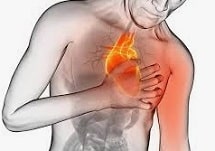 The myocardium is the muscular sector found between the endocardium and the pericardium of the heart in vertebrate animals, including humans . Its operation is involuntary.
The myocardium is the muscular sector found between the endocardium and the pericardium of the heart in vertebrate animals, including humans . Its operation is involuntary.
Numerous capillaries run through this muscle tissue that does not need nervous stimulation, since it is myogenic : it self-excites electrically. The thickness of the myocardium varies according to the area due to the different blood pumping needs; Therefore, the wall of the left ventricle is the thickest and the walls of the atria are the thinnest.
While the endocardium is the inner lining of the ventricles and atria, the pericardium is the membrane that lines the outer surface. The myocardium develops between them.
When a disease occurs in the myocardium, it is called cardiomyopathy . It can be an intrinsic cardiomyopathy (there is no external cause that causes it) or an extrinsic cardiomyopathy (the reason for the disorder is located outside the muscle). Myocarditis , meanwhile, is an inflammation of the myocardium that can be due to a bacteria or a virus.
Myocarditis can damage the heart 's electrical system in addition to the heart muscle, which it inflames in the first place, and all of this can lead to a reduction in the organ's pumping capacity that produces abnormal fast rhythms , known as name of arrhythmias .
Myocarditis usually arises from a viral infection, although it can also occur as a result of a reaction to a medication. It may even be one of the characteristics of more general inflammation . Severe myocarditis causes weakness in the heart, which reduces the amount of blood the body receives. Additionally, clots can form, sometimes leading to a heart attack or stroke.
The symptoms of myocarditis are various and depend on factors such as the severity of the case and the age of the patient. In fact, during the earliest stages of moderate myocarditis there are usually no symptoms or those that appear are mild. On the other hand, the most severe are the following:
* difficulty breathing, both during full activity and at rest;
* chest pain;
* alteration of heart rhythms;
 * swelling of the legs, feet and ankles due to fluid retention ;
* swelling of the legs, feet and ankles due to fluid retention ;
* fatigue;
* fever and pain in various parts of the body, including the head, throat and joints.
Children with myocarditis usually have several of these symptoms, with the exception of fluid retention and fatigue, although fainting and rapid breathing are added.
Regarding the possible causes , it is necessary to point out that they cannot always be identified. Among the most common are the following:
* viruses : there are several viruses that are associated with myocarditis, including adenovirus, parvovirus and herpes simplex virus;
* bacteria : staphylococcus, streptococcus and those that cause Lyme disease and diphtheria are some of the most common;
* parasites : Trypanasoma cruzi and toxoplasma stand out;
* fungi : people with a deficiency in the immune system can suffer myocarditis due to fungi such as histoplasma and yeast.
If the arteries of the heart deteriorate and become blocked, a myocardial infarction occurs. This condition is triggered when lipids and cholesterol plaques accumulate on the walls of the arteries, causing the heart to not receive the amount of blood it needs. In the absence of irrigation due to a complete blockage of the blood vessel, cardiac cells perish and myocardial infarction occurs, which is fatal if not treated urgently.
